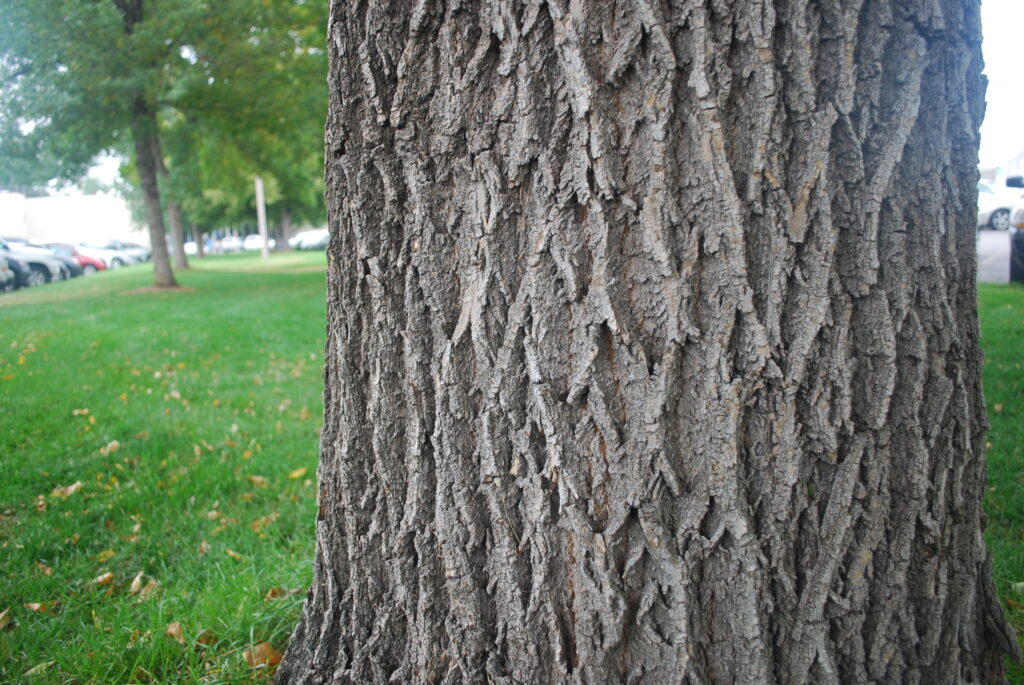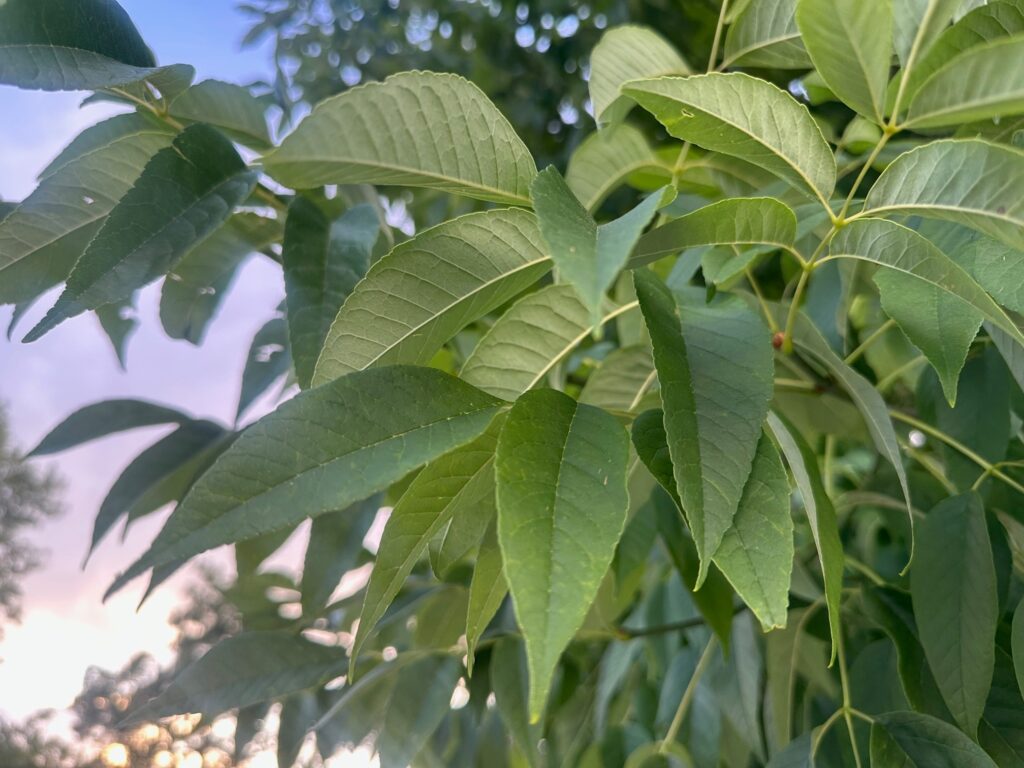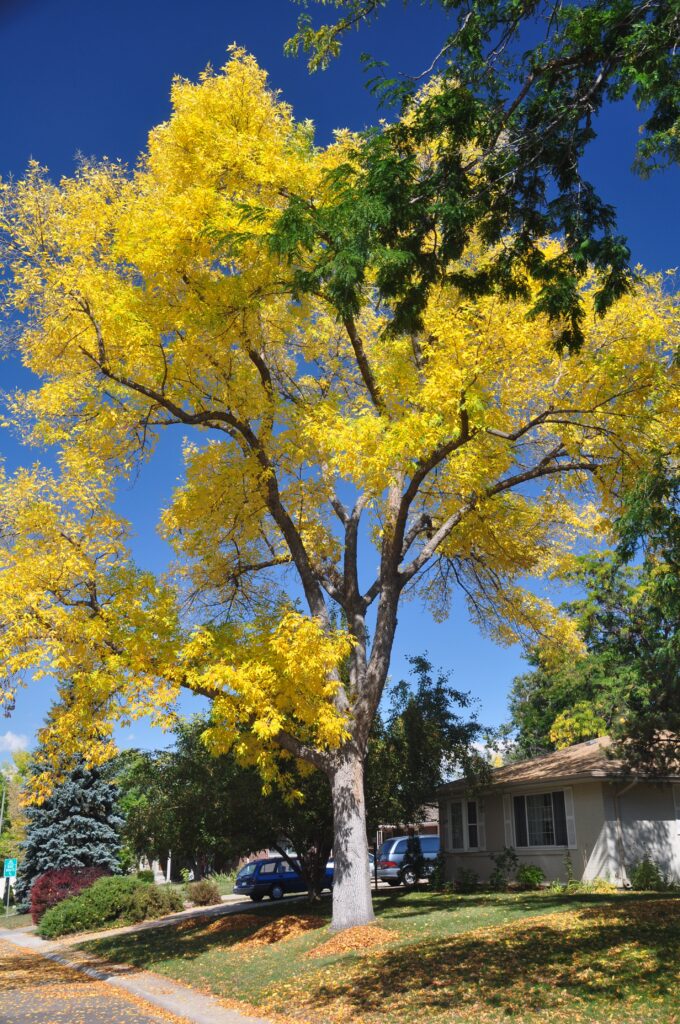From the Hort Desk
- 2023-07-05
- By mkirk
- Posted in Horticulture, The Garden Buzz
By Lisa Mason, CSU Extension Horticulture Agent
BREAKING NEWS
Emerald Ash Borer is in Littleton: What You Need to Know
Have you heard the news? Emerald ash borer was recently discovered in Littleton and Carbondale, Colorado.

When emerald ash borer was first discovered in Boulder in 2013, experts didn’t know how long it would take for EAB to spread throughout the Front Range and Colorado. A Boulder County quarantine provided information and education to help reduce the transport of firewood in and out of the county to slow the spread. EAB remained in Boulder County for about 5 years. Since then, it has been identified in Broomfield, Larimer and Adams counties, and more recently in Erie and Thornton in 2021. Now in June 2023, EAB has been confirmed in Littleton and Carbondale. Both of these discoveries are huge “jumps” from the currently know infestation on the northern Front Range. Likely, infested firewood was transported to both locations.
The challenge with EAB is that it is so difficult to detect in trees. I was part of the team to help confirm the discovery of EAB. A pupa was pulled out of the tree and mailed to taxonomic experts at Colorado State University. A DNA analysis confirmed it was emerald ash borer. We looked for EAB-infested trees in the surrounding areas but couldn’t find any. EAB likely has spread, so perhaps the trees aren’t showing obvious symptoms yet or some of the surrounding trees are already being treated with insecticides. We don’t know for sure. Healthy ash trees can take several years before they start showing symptoms. They also infest the top of the tree first, adding a layer of difficulty in detection.



Left: Ash ID – Diamond-shapes in bark, Photo: Ryan Lockwood. Middle: Ash leaves 5, Photo: Lisa Mason. Right: Green ash, Photo: William Ciesla
For nearly 10 years, we’ve been educating people to make a plan for their ash trees. Now that EAB is here, the message is still the same: Make a plan!
When to Take Action
Is it time to take action on your plan? It depends on where you live. If you live in the immediate vicinity of northeast Littleton, it’s advisable to consider treatment or tree removal sooner than later. When to take action is also a personal and financial decision depending on the health of your ash trees.
Some considerations on when to take action:
- How many ash trees are on your property?
- How healthy are your trees?
- How large are the trees?
- Do they provide value? (e.g., shading your house/yard, sentimental, aesthetic value, etc.)
- If you have healthy trees, are you prepared for the financial cost of treating the trees with insecticide every one or two years (depending on the treatment)?
People have time to make the decision that works for them instead of making rush judgements to treat all trees. Healthy, large ash trees are great candidates for insecticide treatments! Research has shown that a HEALTHY ash tree can be treated with emamectin benzoate AFTER the tree has been infested with EAB as long as the tree hasn’t lost more than approximately 30% of its canopy.
Treatment Options
To learn more about treatment options, click here. Four insecticide treatments are available. The frequency of the application will depend on the product, but each application will range from one or two years. The options available are all systemic insecticides meaning the roots will uptake the product. It will take time for the product to thoroughly move through the tree, and it is important to keep the tree well-watered during this time.
All EAB insecticides require a certified pesticide applicator for application treatments except for Imidacloprid, which can be purchased by consumers at hardware and garden centers. Please note that the Imidacloprid formula available to consumers should only be applied to small ash trees less than 15 inches in diameter otherwise the formula will not be strong enough to protect the tree. When using the consumer formula of Imidacloprid, be mindful that the product binds to organic matter. All mulch and leaf debris will need to removed for the product to be effective. Do not apply if flowers are present underneath the tree. Not only will the flowering plants uptake the product leaving less for the tree, but the product will harm any beneficial flower visitors such as bees.
If trees are professionally treated, the impact on honey bees is likely minimal. Research has shown that ash pollen is a minimal food source for honey bees. They prefer other early blooming plants like maples. In addition, ash trees bloom early in the season while treatments are recommended after bud break usually in late May (Al-Akeel, 2020). Other non-target insect species could be impacted. For instance, the two-tailed swallowtail butterfly and two species of sphinx moth rely heavily on ash trees as caterpillar host food in urban areas. If they feed on the leaves of an ash tree that has been treated with insecticides, they likely will not be able to survive.
Removing Trees
Unhealthy, small ash trees are not candidates for insecticide treatments because the insecticides need to be taken up systemically through the root system. An unhealthy tree will not be able to uptake the insecticides effectively and will still be at risk for EAB. If you have an ash tree that is declining in health, removal will be the safest, most effective option. An EAB-infested tree will cost more to remove because EAB reduces the structural integrity of the wood making it more hazardous to remove. Consider replacing your ash tree with species that grow well in Colorado. If you are planting multiple trees, diversity is key. Colorado can be a tough place for a tree to get established, but here is a great list of options. Look for trees with an A-list rating.
A Personal Perspective
I have three ash trees in my front and back yard. They are well-established, healthy, and beautiful trees. They provide shade and privacy. All three are approximately 8 inches in diameter which is considered smaller in size, but they feel larger since the canopy is thick and full. We are faced with a decision on what to do with our ash trees sooner than expected, too. My husband and I still haven’t decided what we will do with the ash trees. For now, we want to enjoy them as long as possible. We have decided not to start treating yet because EAB is still a few miles away. As an entomologist, I am mindful that caterpillars of the two-tailed swallowtail host on ash trees. Two species of sphinx moth in Colorado as well as other insects have associations with ash trees. If the tree is full of insecticides, any caterpillars or other insects feeding on the leaves will die. Long-term, we still haven’t decided if we will keep our beautiful trees or remove and replace them. Thankfully, EAB typically spreads slowly and we have some time to decide. We will reassess the situation next year.
We recognize it’s not easy to decide what to do with your ash trees. My recommendation is to weigh all your options and take the time to make the decision that is best for you. When considering hiring a tree care professional, make sure to:
- Ask for credentials. Arborists should be certified through the International Society of Arboriculture, have a current State of Colorado Pesticide Applicator License and should be insured.
- Ask for a specific contract of work and customer references.
- Do you research and get quotes from multiple companies.
In the meantime, keep your ash trees as healthy as possible. The extra moisture this summer has reduced the drought stress on many ash trees. Continue to provide supplemental water year round to help your ash trees withstand pressure from any potential infestation.
Contact Us
Please reach out to the Master Gardeners and staff at the Colorado State University Extension office in Arapahoe County with any questions. We can walk you through all your options so that you can make the best decision. We can help you determine if you have EAB in your trees, or if you have another boring insect that isn’t as deadly. Call the office at 303-730-1920 or email at MasterGardener@arapahoegov.com. You can also read the latest about EAB on the Arapahoe County website.
Horticulture Resources
- Garden Buzz Archives
- CSU Extension Resources
- Colorado Master Gardener Program
- Foothills to Plains Native Plant Master Program
- Native Bee Watch Community Science Program
- The Co-Hort Blog
- PlantTalk Colorado
- Soil Testing
- Plant Select
- Emerald Ash Borer
- Japanese Beetle
- Colorado State Forest Service
- Ask an Expert


